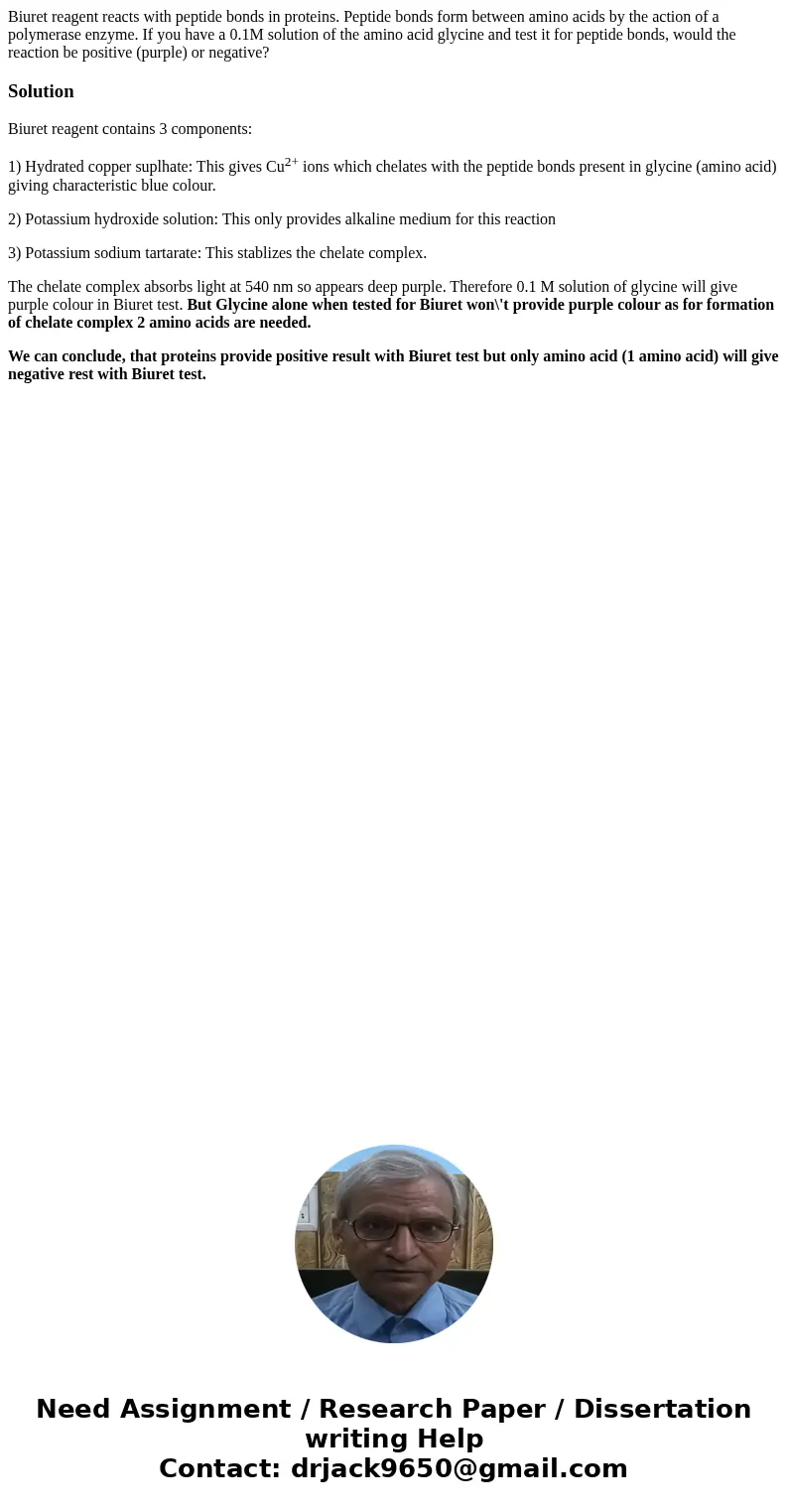Biuret reagent reacts with peptide bonds in proteins Peptide
Solution
Biuret reagent contains 3 components:
1) Hydrated copper suplhate: This gives Cu2+ ions which chelates with the peptide bonds present in glycine (amino acid) giving characteristic blue colour.
2) Potassium hydroxide solution: This only provides alkaline medium for this reaction
3) Potassium sodium tartarate: This stablizes the chelate complex.
The chelate complex absorbs light at 540 nm so appears deep purple. Therefore 0.1 M solution of glycine will give purple colour in Biuret test. But Glycine alone when tested for Biuret won\'t provide purple colour as for formation of chelate complex 2 amino acids are needed.
We can conclude, that proteins provide positive result with Biuret test but only amino acid (1 amino acid) will give negative rest with Biuret test.

 Homework Sourse
Homework Sourse